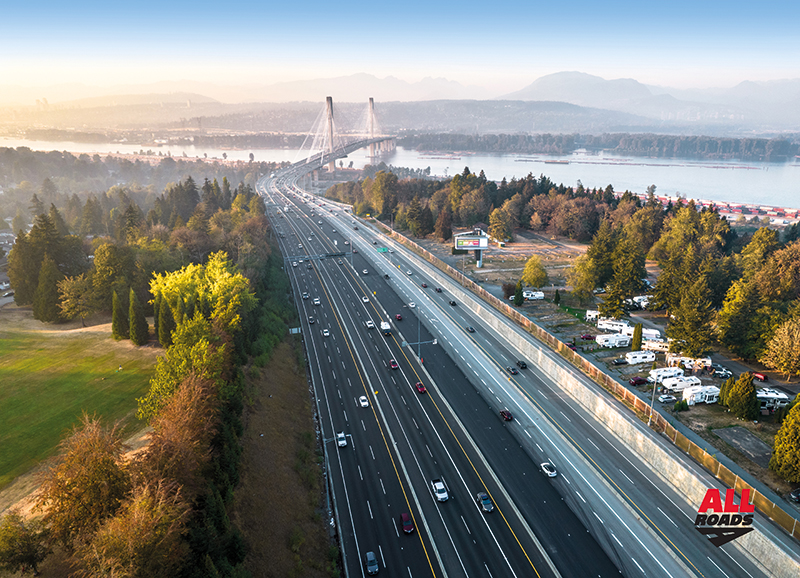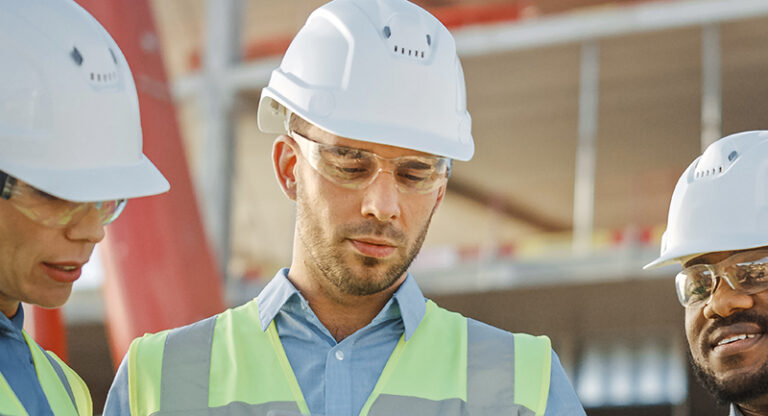Road building technologies attract young skilled workers to sector
By Andrew Snook
In our world of ever-changing and evolving technologies, it comes as no surprise that each new generation grows up to be more tech savvy than its predecessor. This has been particularly true for Millennials and Generation Z, which have been brought up in a world where technologies have evolved at a faster pace than ever before.
While the younger generations’ adoption of the latest technologies has been a boon for industries that are able to adapt and embrace technologies quickly, others have historically struggled to keep up, and it has made it difficult for them to attract and retain young skilled workers who are looking to use these technologies in their careers.
The construction industry as a whole—road building sector included—has been slower to adopt new technologies than many other industries, and it can be argued that has exacerbated the industry’s pre-existing skilled labour shortage. The latest estimate for the skilled labour shortage in Canada’s construction sector is a shortfall of about 261,400 positions from now until 2032, according to BuildForce Canada’s report, Construction and Maintenance Looking Forward: An Assessment of Construction Labour Markets from 2023 to 2032. Most of this shortfall comes from a massive wave of retirements already underway, coupled with a lack of young skilled workers entering the industry.
While the industry overall has been historically slow to adopt the latest technologies, this has started to change with more and more companies putting significant investments into their fleets and overall operations to remain competitive—this is particularly true within the road building sector. Some of the biggest advantages that the latest technologies have provided are attracting the next generation of skilled workers into the road building sector and getting new operators up to speed quickly on various types of heavy equipment.
“Our industry across the world is having a shortage of skilled people, and parents don’t tell their kids, ‘Why don’t you grow up and become a paver out on the highway?’ But what these kids have all done is grown up with gaming in their households. And so, when you get them out and they see they’re using a touchscreen, really letting technology move and adjust everything, they’re totally comfortable with it,” says Rod Stephens, president of All Roads Construction, based in the Vancouver area.
With the wave of skilled operators heading towards retirement continuing to grow, Stephens says these technologies are vital for contractors to remain competitive.
“These guys who are 60 years old and have had 40 years of experience, they’re quite good on their own. But we don’t have 40 years to train the new kids how to do things. So, we need to use technology to sharpen their learning curve. And they’re quite capable of doing it, and they love it,” he says.
The Association of Equipment Manufacturers’ report, Benefits of Construction Equipment Technologies and their Impact on Society, highlights four types of equipment technologies that have made significant impacts over the past 20 to 30 years: machine and grade control; engines and drivetrains; digital control systems; and machine telematics. Sara Feuling, AEM’s senior director of construction, says the No. 1 reason contractors have embraced new technologies is because of their impact on training inexperienced operators.
“Training people is expensive. It’s time consuming, and time is money more than anything in this industry. It pulls the good guys off what they’re doing to help train these people. And if you don’t have to do that, and you can throw them into the seat and it doesn’t take a long time for them to get up to speed, it’s huge,” Feuling says. “I think we’re going to see that more and more.”
Investments in the future
All Roads Construction is a leader when it comes to investing in the latest road building technologies. The company has been featured around the world for some of its investments.
In 2020, All Roads Construction became the first company in Canada to build a state-of-the-art 2020 Gencor 300TPH Skidded Asphalt Ultraplant, which meets emission guidelines for some of the strictest places in North America like the Greater Vancouver area and California. More recently, the company became the first in Canada to introduce Topcon’s SmoothRide system and Pavelink system, and the Notch Wedge Safety System from Willow Designs. The company prides itself as being “the most technically advanced paving contractor in Canada.”
“I’ve got to give our team credit for leading the charge and trying to get the rest of the industry up to speed on using these technologies, because they work,” Stephens says. “But being that we’re a bit of a guinea pig as the first to really use them, we find all of the little snags and nuances with them and tend to work out the kinks, and help the supplier out with their technologies, and then they fix it and market it better. It’s worked quite well for us to work collaboratively.”
All Roads Construction combined its latest road building technologies including its Gencor 300TPH Skidded Asphalt Ultraplant, GPS technologies, LPS (local positioning system), and Topcon’s PaveLink (a cloud-based application that interconnects the asphalt production process, logistics, and paving at the jobsite for optimizing efficiencies) to complete a multi-year Highway 1 resurfacing project this past October. The projects, in total, spanned 300-lane kilometres where it laid down 240,000 tons of asphalt. The work was performed for the B.C. Ministry of Transportation and Infrastructure covering the Highway 1 section from Willingdon Street in Burnaby to 216th Street in Langley.
“We are the first to have four pavers paving an echelon, all going down the road, side-by-side, all running on GPS. That way we could pave almost 21-meters-wide with no joints,” Stephens says. “It’s going to help with the lifecycle costs because cold joints are always the weakest point of the highway, and you don’t have any cold joints.”
The company’s efforts have earned it a nomination for B.C. Transportation Contractor of the Year Award. All Roads Construction earned that honour once already, winning the award in 2020.
Stephens says his younger workforce is spreading the word about All Roads Construction’s passion for investing in the latest technologies, and that it has helped with attracting new talent.
“I get younger workers, 35 years and younger, from other companies calling all the time saying, ‘Hey, we want to be with All Roads, because we want to be on the leading side of technology.’ So, there’s a pride that goes with it, too. There are lots of side benefits that you don’t tend to think of until you witness them happening,” he says.
Flying high
Another technology that has been embraced by almost every member of the BC Road Builders & Heavy Construction Association’s (BCRB) 280-plus members in the road building sector are drones, whether it’s for surveying quarries, obtaining data on atmospheric rivers, or one of the many other applications these machines offer contractors.
“[During the floods] they were able to engineer replacement of the bridges using drones and 3D drawings,” says Kelly Scott, president of the BCRB. “What would have taken six months of engineering they were doing in six days.”
One of the BCRB members that have found drones to offer some great advantages is Enviro-Ex Contracting in Prince George. Headquartered in B.C.’s Northern Interior, the contractor specializes in heavy civil, environmental, and structural construction projects, servicing the oil and gas, mining, forestry, transportation, and marine sectors with critical infrastructure and environmentally sustainable solutions across Western Canada.
“The biggest advantages we have from them is photographs,” says William Hoban, president of Enviro-Ex Contracting. “We’re able to produce 3D drone flights that create a detailed meshed image of the terrain and any issues on the project site itself. We’re able to back that up with hundreds of thousands of photos when the drone flies, and that has real tangible benefits.”
When issues arise on a construction site, whether it’s a safety issue, a quality issue or a naturally occurring issue, these images are extremely helpful to have on hand.
“You’re able to prove and showcase the work itself, and the issue that’s present. That’s been a huge benefit,” Hoban says. “A lot of times, owners and people that are managing projects are not on the project site. They may see one photo that may look out of place or hear of an issue, but they don’t understand why the issue occurred or what caused the issue, and the more photos and ability to show them, the better.”
Telematics and autonomous equipment
Telematics is another incredibly useful tool that contractors have been embracing. Telematics helps contractors understand how their machines are used, how much they’re being operated, and allows them to effectively manage that fleet.
“Telematics is the first step to what is interoperability,” Feuling says. “There’s an ISO standard that will be published next year that really allows some of that server-to-server communication building on that machine and grade control system. But then, that is the next step to autonomy—how all of those things piece together and work together. If you’re not effectively engaging or using grade control solutions today, or effectively using your telematics, you’re not going to be ready for when we get to the autonomy down the line. We’re seeing a lot of automated features. We’re not necessarily at the fully autonomous jobsite yet, but we have bits and pieces.”
Some of the autonomous equipment that has started to roll out into the marketplace and on to jobsites include autonomous rollers and autonomous compactors.
“It’s those repetitive tasks that end up being automated first. Whereas, when you talk about construction, it is such a broad scope—even when you talk about just road building,” Feuling says. “No two road projects are the same, and now when you start to try to figure out how we can automate some of these things, that goes back to your digital control systems, which is what fed your machine control, which is pulling off of your telematics to get you to this interoperability piece. We’re seeing a lot of those things happen, collectively and interwoven. That’s where we’re going. We’re going to a place where some of these things are all coexisting together.”
Leading-edge or bleeding-edge?
While all contractors want to be equipped with the best technologies available in the marketplace to remain competitive, embracing the latest and greatest equipment and software can come with some risk, and that’s not for everyone.
“Some technologies out there are being sold prematurely. So, we’re a little cautious about what we jump into, because if a system sounds too good to be true, and doesn’t provide the proper ROI, then we have a tendency to ween it out,” Hoban says.
Scott says companies will need to embrace the latest technologies – and the change that comes with them – to continue to do well in the road building sector in the future.
“They have to adapt, and they are adapting. I’ve always said that about this industry, if they see a better, innovative way of doing things, they adapt. That’s sort of the beauty of the industry,” he says.
As for All-Roads Construction, Stephens expects his company will continue to embrace the latest technologies as long as they come with a reasonable amount of risk. He notes that any company that is planning on embracing leading-edge technologies should be selective when choosing which of their teams lead the initiative.
“When you’re proving out technologies for your own company, make sure you’re taking your leading team that is pro technology to do that,” he says.
Andrew Snook is a freelance business-to-business writer based in Mississauga, Ont.
[This article originally appeared in the January/February 2024 edition of ReNew Canada]
Featured image: (All Roads Construction)












